Visualizing Paul Goldschmidt’s Slump
Let’s face it, Paul Goldschmidt hasn’t been going so well lately. I mean, he’s still been good, but good isn’t great and great is what we’re accustomed to seeing out of Goldy. He’s an MVP-caliber player who’s been playing like a solid regular for the last month. Guys like David Peralta, Welington Castillo and A.J. Pollock have been picking up the slack, but there’s no confusing that this is a Goldschmidt-led team. So we have to wonder, what the hell is going on?
The answer, it seems, is convoluted. After watching him at the plate over the last couple of weeks and subsequently pouring over the data, there’s no “one thing” that stands out. Well, maybe there’s an explanation, but we’ll get to that later. The drop off is clear, however. From the start of the season through July 9th, Goldschmidt was slashing .349/.466/.618. Since then, he’s hitting a much more pedestrian .295/.394/.432. The average is down, but no one’s going to complain about a guy hitting almost .300 and getting on base nearly 40% of the time. The massive drop is in the power department where Goldschmidt’s ISO has fallen from .270 to .136. Something’s up, but again, finding the culprit isn’t necessarily easy.
For now, let’s look at several components of Goldschmidt’s production over the season. To start with, let’s look at the overall production via wOBA (click to enlarge).
Goldy’s start was excellent and he maintained the progress through the first three full month of the season. Where a .330 is good, we can see that Goldschmidt was routinely well above this number during most games through June and into July. In fact, there are several monster games where he posted a w/OBA above .800. But that production dropped off steeply right around the all star break. He’s still posting good numbers, but they aren’t anywhere near the levels that we’d seen previously. He’s walking a ton and still notching hits, but the decrease in power is driving his game-by-game w/OBA down.
Maybe there’s something in how he’s hitting the ball that’s dragging him down. Let’s look at his ground ball, line drive and fly ball rates over the season (click to enlarge).
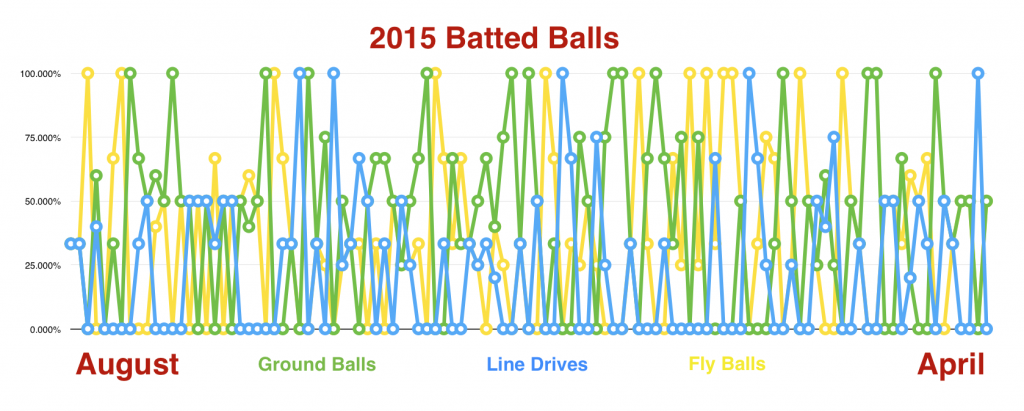 Here it appears that, in the last month, he’s traded in some fly balls (yellow) for line drives (blue) and grounders (green). The line drives and grounders are nice for racking up hits, but without the fly balls we’re not seeing the homers and long doubles. Sure, fly balls turn into outs more often than any other type of batted ball, but they’re also where the power production comes from.
Here it appears that, in the last month, he’s traded in some fly balls (yellow) for line drives (blue) and grounders (green). The line drives and grounders are nice for racking up hits, but without the fly balls we’re not seeing the homers and long doubles. Sure, fly balls turn into outs more often than any other type of batted ball, but they’re also where the power production comes from.
Is he hitting the ball less hard en route to this drop in fly balls? I’m glad you asked. Here are his hit types by velocity over the season (click to enlarge):
There is a decrease in hard-hit balls over this span, too. A few more soft hit balls can be found and he’s still notching plenty of medium hit balls, but the hard hit stuff seems to have dropped slightly. This would suggest that he’s not making quite the same level of contact as he was previously. Since Goldy does so much damage by punishing baseballs it’s no surprise that the outcome would change if he were hitting it differently.
Of course, that might not be of his doing. Are pitchers giving him less to hit these days? After all, you couldn’t really blame them for feeling victimized for the first three months of the season. Here is the rate of pitches in the strike zone that he’s seen over the course of 2015 (click to enlarge).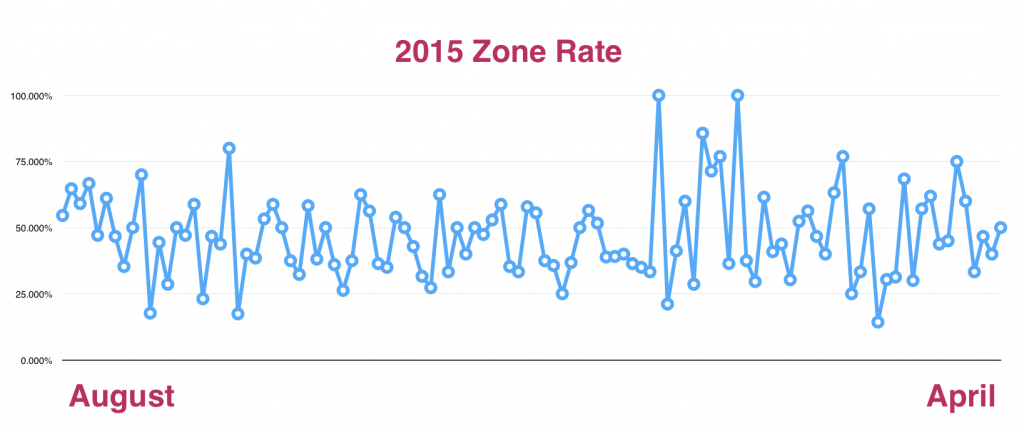
Well, that doesn’t appear to be the culprit. There have been fluctuations all year long, but it doesn’t appear that he’s seeing a lot fewer pitches in the zone by any means. In fact, things have trended upwards slightly over the last two weeks or so. It’s not like Goldy isn’t getting pitches to hit, he’s just not doing the same things with them.
And for one final check, we can look at his plate discipline, just to make sure that he’s not pressing and making bad decisions up there. Here are his in-zone and out-of-zone swing rates (click to enlarge):
Again, there’s not much here. There are a few spikes in his out-of-zone rates, but for the most part, things are in line with his early marks in the season. He may be chasing ever so slightly more, but it’s nothing drastic. If anything, he appears to swinging at a few fewer pitches in the zone which might be a better indicator of his current funk than anything. The drop in pitches swung at in the zone might show us that he’s uncomfortable at the dish, at least by his herculean standards.
Putting it all together, we can clearly see the drop in production, but we can’t exactly see why. He’s not being pitched to in a drastically different manner. Paul Goldschmidt can hit any kind of pitch in any part of the strike zone. We know that. He’s still doing that, but he’s doing that with less authority than before.
If I had to venture a guess as to why, I’d suggest something that won’t show up in the graphs: Paul Goldschmidt is tired. He’s playing every day and has been doing so for almost the entire season. He’s played in 109 of the team’s 110 games through Sunday. He may be Arizona’s Superman, but even Superman needs a break every once in a while. He didn’t get it over the all star break like a lot of other players did and he just received his first full day off last week.
There’s a reason for that, of course. They simply can’t afford to take him out of the lineup. When Jarrod Saltalamacchia is the back up first baseman, you know you’ve backed yourself into a corner. There’s no viable alternative on the roster. So while Goldschmidt is struggling, it’s likely he’ll have to power his way through it. Hopefully he can find his comfort at the plate again as Arizona chases as .500 season. If he doesn’t, it’s unlikely they find their way to that mark before 2015 runs out.
3 Responses to Visualizing Paul Goldschmidt’s Slump
Leave a Reply Cancel reply
Recent Posts
@ryanpmorrison
 Best part of Peralta’s 108 mph fliner over the fence, IMHO: that he got that much leverage despite scooping it out… https://t.co/ivBrl76adF, Apr 08
Best part of Peralta’s 108 mph fliner over the fence, IMHO: that he got that much leverage despite scooping it out… https://t.co/ivBrl76adF, Apr 08 RT @OutfieldGrass24: If you're bored of watching Patrick Corbin get dudes out, you can check out my latest for @TheAthleticAZ. https://t.co/k1DymgY7zO, Apr 04
RT @OutfieldGrass24: If you're bored of watching Patrick Corbin get dudes out, you can check out my latest for @TheAthleticAZ. https://t.co/k1DymgY7zO, Apr 04 Of course, they may have overtaken the league lead for outs on the bases just now, also...
But in 2017, Arizona ha… https://t.co/38MBrr2D4b, Apr 04
Of course, they may have overtaken the league lead for outs on the bases just now, also...
But in 2017, Arizona ha… https://t.co/38MBrr2D4b, Apr 04 Prior to the games today, there had only been 5 steals of 3rd this season (and no CS) in the National League. The… https://t.co/gVVL84vPQ5, Apr 04
Prior to the games today, there had only been 5 steals of 3rd this season (and no CS) in the National League. The… https://t.co/gVVL84vPQ5, Apr 04 RT @OutfieldGrass24: Patrick Corbin has a WPA of .318 and it's only the fifth inning., Apr 04
RT @OutfieldGrass24: Patrick Corbin has a WPA of .318 and it's only the fifth inning., Apr 04
Powered by: Web Designers@outfieldgrass24
 Old friend alert https://t.co/xwSHU0F8Hn, 11 hours ago
Old friend alert https://t.co/xwSHU0F8Hn, 11 hours ago Every once in a while you get a beer that's just a little off... Usually happens to me at airports., 17 hours ago
Every once in a while you get a beer that's just a little off... Usually happens to me at airports., 17 hours ago If Pollock doesn’t sign with a team that wears red uniforms I’m going to be really disappointed. Working theory: Se… https://t.co/zHn9DqzEiD, 18 hours ago
If Pollock doesn’t sign with a team that wears red uniforms I’m going to be really disappointed. Working theory: Se… https://t.co/zHn9DqzEiD, 18 hours ago The work here by @Britt_Ghiroli is splendid https://t.co/c8tSq0vw3T, 18 hours ago
The work here by @Britt_Ghiroli is splendid https://t.co/c8tSq0vw3T, 18 hours ago RT @TheAthleticAZ: Plenty of #Dbacks fans gave it some time - and they still don't like the idea. The "why" from @ZHBuchanan
https://t.co/9oDlvue3fV, Dec 07
RT @TheAthleticAZ: Plenty of #Dbacks fans gave it some time - and they still don't like the idea. The "why" from @ZHBuchanan
https://t.co/9oDlvue3fV, Dec 07
Powered by: Web Designers

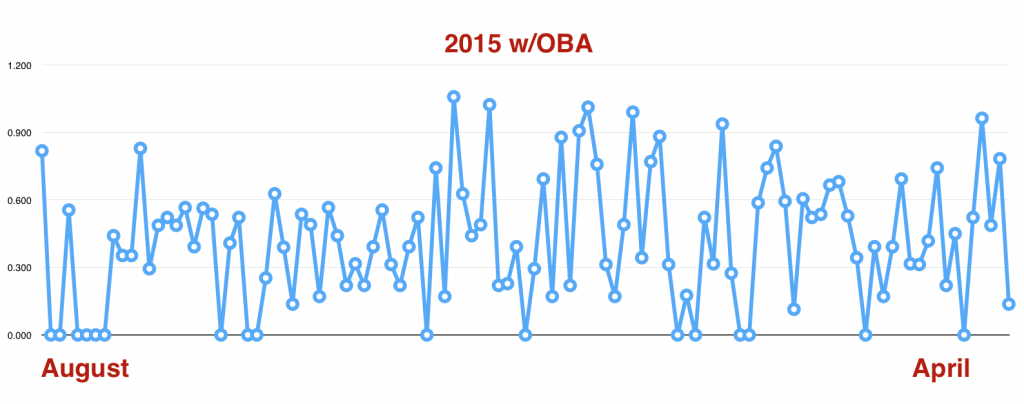
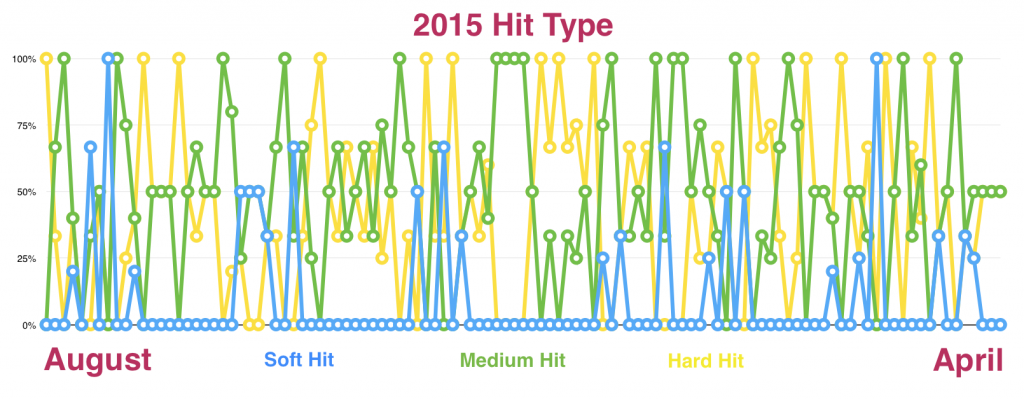
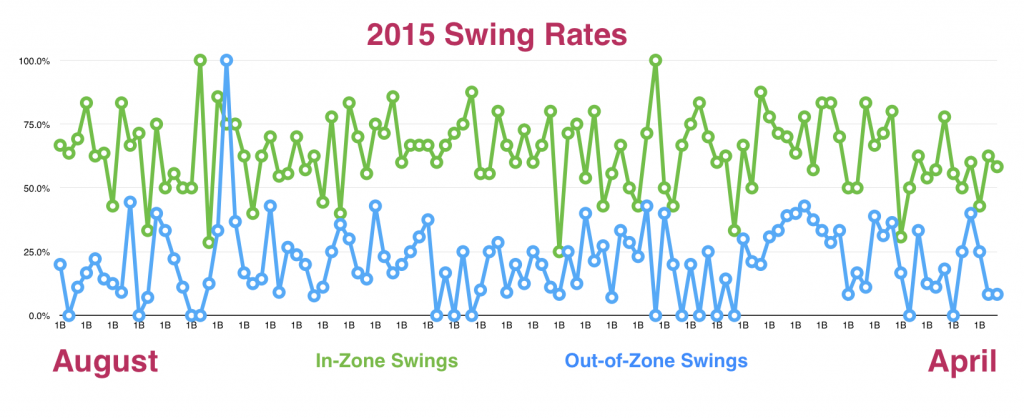




You don’t need a computer to see this one.
If you watched the games you could see that the bat simply wasn’t going where he wanted and when he wanted. He was missing pitches that were within his reach. Pitches he was not missing before.
He was still reading the pitches, having good command of the strike zone, and making good decisions about when to swing. He just wasn’t making solid contact when he did swing.
On his 3-4 night on Sunday, he started making solid contact for the first time after working on something mechanical with batting coach Turner Ward. They appeared to have found something. Over the next few we’ll know for sure…
Right, and that’s really the conclusion I came to. Sometimes you dig into this stuff and you find something new. Other times you find nothing at all. Not every search is fruitful, and in this case, he’s just off a hair and it’s showing up in the hard-hit balls and lack of fly balls, perhaps. Why those things are happening is anyone’s guess.
The bat speed looks like it’s taken a hit and I agree with you that he just seems to be tired. Plain and simple. He’s swinging at good pitches but instead of driving them out of the park he’s fouling them off or missing altogether. Tired = slow.